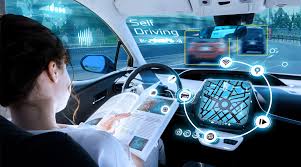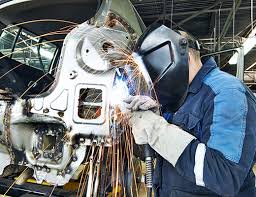The automobile industry
The first petrol-powered car was built in the late 19th century. Today, the industry is a vital component of the global economy, providing millions of jobs and generating billions of dollars in revenue every year. However, the industry’s success would not have been possible without the continuous efforts of research and development (R&D) in driving innovation and growth.
Research and development refer to the systematic and scientific process of discovering, designing, and developing new products, processes, or technologies. The purpose of R&D is to find ways to improve existing products, create new ones, and explore new technologies that could lead to new markets and growth opportunities. In the automobile industry, R&D plays a crucial role in driving innovation and growth in various ways.
The role of research and development
One of the primary roles of R&D in the automobile industry is to improve the efficiency and performance of vehicles. The industry is highly competitive, and manufacturers are continually looking for ways to gain an edge over their rivals. R&D enables manufacturers to create more efficient and reliable engines, reduce emissions, and improve fuel economy. For example, hybrid and electric cars are the result of years of R&D, and they are now a significant part of the automobile industry. These vehicles are more environmentally friendly and cost-effective than traditional petrol-powered cars, thanks to R&D efforts.

R&D also drives innovation in vehicle safety. With an increasing number of vehicles on the roads, safety has become a top priority for consumers and regulators. R&D helps automobile manufacturers to develop new safety technologies such as automatic braking, lane departure warning, and blind-spot monitoring systems. These technologies have contributed significantly to reducing the number of road accidents and fatalities.
Another role of R&D in the automobile industry is to improve the design and aesthetics of vehicles. Consumers are becoming increasingly discerning and demanding, and they expect their cars to be stylish and visually appealing. R&D helps manufacturers to design and create cars that are not only functional but also aesthetically pleasing. From sleek and aerodynamic body designs to luxurious and comfortable interiors, R&D plays a crucial role in ensuring that cars meet the changing tastes and preferences of consumers.
In addition to improving the performance, safety, and design of vehicles, R&D also drives innovation in manufacturing processes. The automobile industry is highly capital-intensive, and manufacturers are continually looking for ways to reduce costs and improve efficiency. R&D enables manufacturers to develop new technologies that can automate and streamline production processes, reduce waste and improve quality control. For example, the introduction of robotics and automation in automobile manufacturing has led to significant improvements in productivity and efficiency.
R&D also plays a critical role in driving growth in the automobile industry by creating new markets and opportunities. The industry is highly competitive, and manufacturers are continually seeking new markets and customers. R&D enables manufacturers to develop new products and technologies that can open up new markets and create new growth opportunities. For example, the emergence of electric and hybrid vehicles has created a new market segment that did not exist before. This market segment is now a significant growth area for automobile manufacturers, and R&D has played a vital role in its development.
R&D also helps automobile manufacturers to stay ahead of regulatory changes and comply with environmental standards. Governments around the world are increasingly imposing stringent regulations and standards on the automobile industry to reduce emissions and improve fuel economy. R&D helps manufacturers to develop new technologies and products that can meet these standards and comply with regulations. For example, the Euro 6 emission standard, which requires vehicles to emit less nitrogen oxide and particulate matter, has driven significant R&D efforts in the automobile industry.

Research and development play a vital role in driving innovation and growth in the automobile industry. R&D enables manufacturers to improve the performance, safety, design, and manufacturing processes of vehicles, create new markets and growth opportunities, and comply with regulatory changes and environmental standards.
The success of the automobile industry is largely due to the continuous efforts of R&D, which has resulted in the creation of new technologies and products that have transformed the industry and improved the lives of consumers.
However, R&D in the automobile industry is not without its challenges. The high cost of research and development is one of the biggest challenges faced by automobile manufacturers. Developing new technologies and products requires significant investment in research and development, which can be prohibitively expensive for smaller companies. Additionally, the long development cycles for new products and technologies can be a significant barrier to entry for new players in the industry.
Another challenge faced by R&D in the automobile industry is the increasing complexity of technology. As vehicles become more sophisticated, developing new technologies and products requires a more comprehensive understanding of a wide range of disciplines, including materials science, electronics, and software development. This means that R&D teams need to be highly skilled and knowledgeable in a range of fields, which can be difficult to find and expensive to hire.
Despite these challenges, research and development remain critical to the future success of the automobile industry. As the industry continues to evolve and face new challenges, R&D will be essential to driving innovation and growth. In particular, R&D in the areas of electric and autonomous vehicles is expected to be a significant growth area in the coming years, as manufacturers seek to meet consumer demand for more sustainable and advanced technology.
In conclusion
Research and development play a vital role in driving innovation and growth in the automobile industry. R&D enables manufacturers to develop new technologies and products that improve the performance, safety, design, and manufacturing processes of vehicles, create new markets and growth opportunities, and comply with regulatory changes and environmental standards. As the industry continues to evolve, R&D will be essential to driving future innovation and growth, and manufacturers will need to continue to invest in R&D to remain competitive and meet the changing needs and preferences of consumers.














